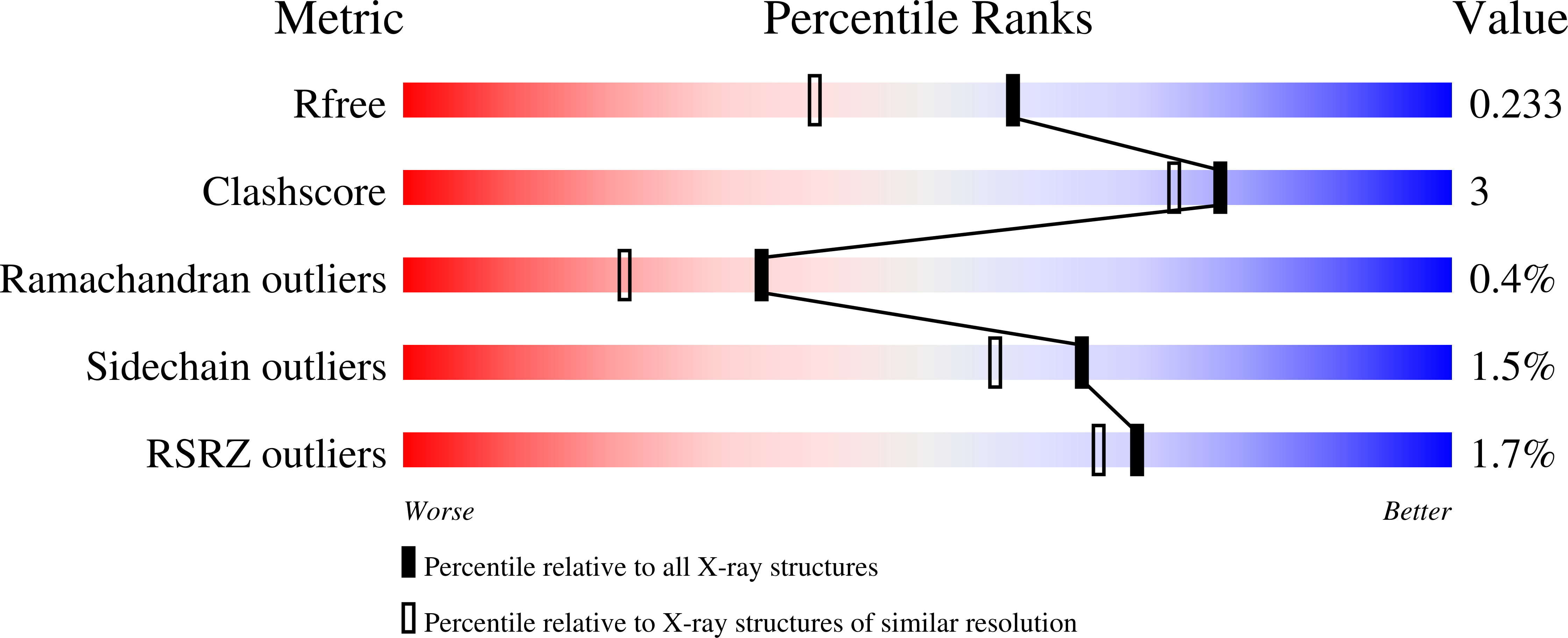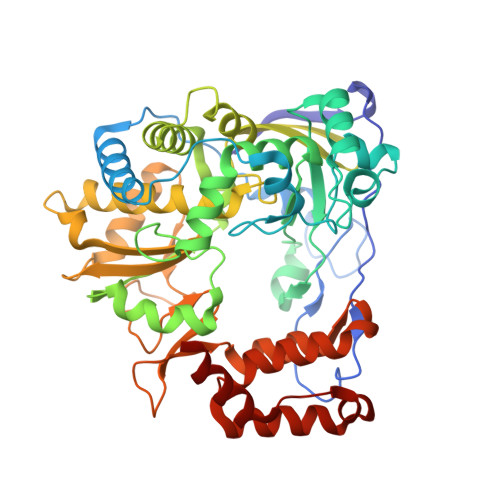Structure-Function Relationships Underlying the Replication Fidelity of Viral RNA-Dependent RNA Polymerases.
Campagnola, G., McDonald, S., Beaucourt, S., Vignuzzi, M., Peersen, O.B.(2015) J Virol 89: 275-286
- PubMed: 25320316
- DOI: https://doi.org/10.1128/JVI.01574-14
- Primary Citation of Related Structures:
4WFX, 4WFY, 4WFZ - PubMed Abstract:
Viral RNA-dependent RNA polymerases are considered to be low-fidelity enzymes, providing high mutation rates that allow for the rapid adaptation of RNA viruses to different host cell environments. Fidelity is tuned to provide the proper balance of virus replication rates, pathogenesis, and tissue tropism needed for virus growth. Using our structures of picornaviral polymerase-RNA elongation complexes, we have previously engineered more than a dozen coxsackievirus B3 polymerase mutations that significantly altered virus replication rates and in vivo fidelity and also provided a set of secondary adaptation mutations after tissue culture passage. Here we report a biochemical analysis of these mutations based on rapid stopped-flow kinetics to determine elongation rates and nucleotide discrimination factors. The data show a spatial separation of fidelity and replication rate effects within the polymerase structure. Mutations in the palm domain have the greatest effects on in vitro nucleotide discrimination, and these effects are strongly correlated with elongation rates and in vivo mutation frequencies, with faster polymerases having lower fidelity. Mutations located at the top of the finger domain, on the other hand, primarily affect elongation rates and have relatively minor effects on fidelity. Similar modulation effects are seen in poliovirus polymerase, an inherently lower-fidelity enzyme where analogous mutations increase nucleotide discrimination. These findings further our understanding of viral RNA-dependent RNA polymerase structure-function relationships and suggest that positive-strand RNA viruses retain a unique palm domain-based active-site closure mechanism to fine-tune replication fidelity. Positive-strand RNA viruses represent a major class of human and animal pathogens with significant health and economic impacts. These viruses replicate by using a virally encoded RNA-dependent RNA polymerase enzyme that has low fidelity, generating many mutations that allow the rapid adaptation of these viruses to different tissue types and host cells. In this work, we use a structure-based approach to engineer mutations in viral polymerases and study their effects on in vitro nucleotide discrimination as well as virus growth and genome replication fidelity. These results show that mutation rates can be drastically increased or decreased as a result of single mutations at several key residues in the polymerase palm domain, and this can significantly attenuate virus growth in vivo. These findings provide a pathway for developing live attenuated virus vaccines based on engineering the polymerase to reduce virus fitness.
Organizational Affiliation:
Biochemistry and Molecular Biology, Colorado State University, Fort Collins, Colorado, USA.















